The world belongs to those who shape it. And however uncertain that world may feel at a given moment, the reassuring reality seems to be that each new generation produces more of what these kids—five Kid of the Year finalists selected from a field of more than 5,000 Americans, ages 8 to 16—have already achieved: positive impact, in all sizes.
Read about how we picked the Kid of the Year here. And watch TIME’s Kid of the Year broadcast special on Dec. 4 at 7:30 p.m. ET on Nickelodeon.
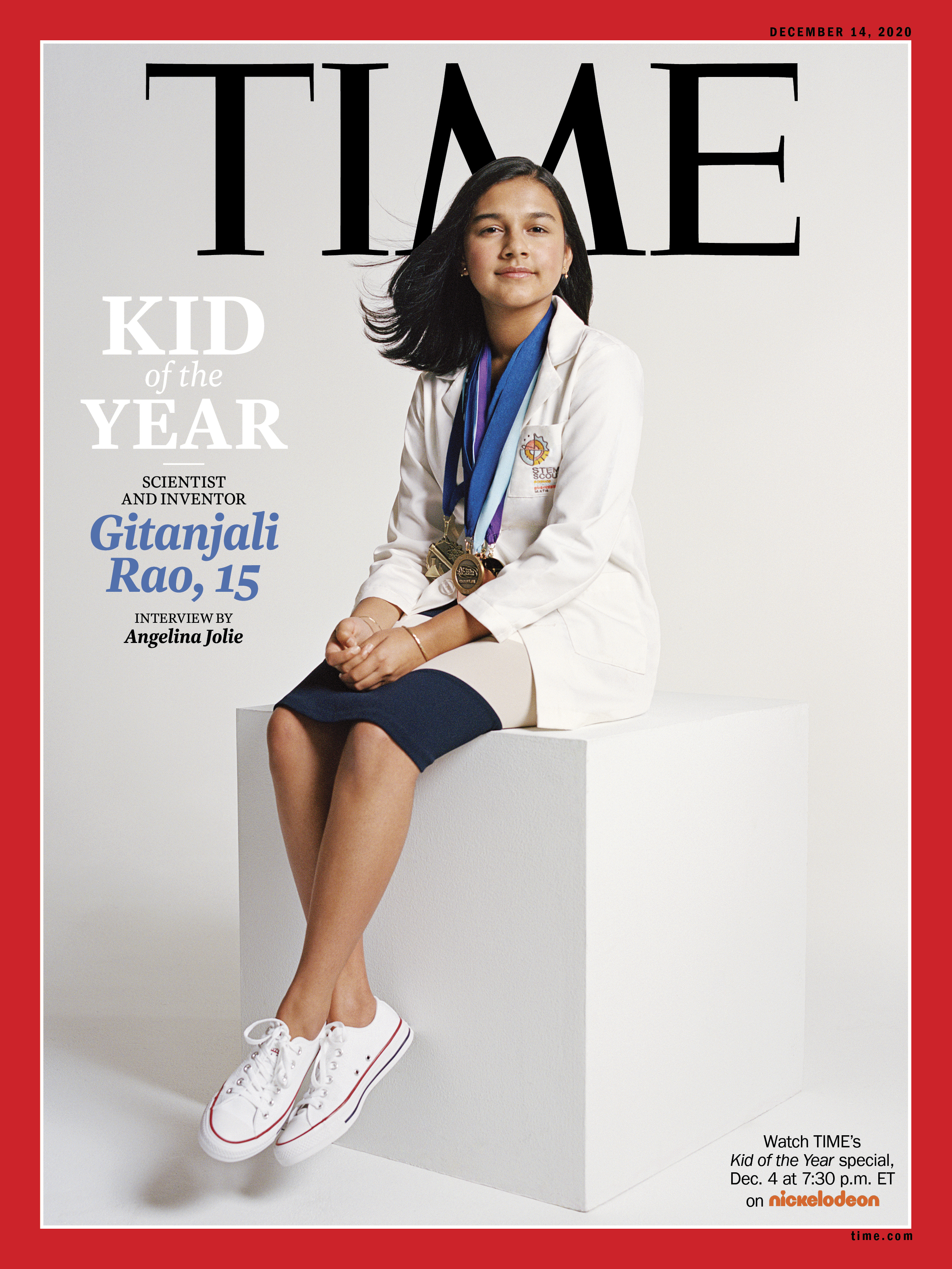
Kid of the Year: Gitanjali Rao, 15
Lone Tree, Colo.
“Observe, brainstorm, research, build and communicate.” That is what the brilliant young scientist and inventor Gitanjali Rao told actor and activist Angelina Jolie about her process, over Zoom, from her home in Colorado, during a break in her virtual schooling. Just 15 years old, Rao has been selected from a field of more than 5,000 nominees as TIME’s first ever Kid of the Year. She spoke about her astonishing work using technology to tackle issues ranging from contaminated drinking water to opioid addiction and cyberbullying, and about her mission to create a global community of young innovators to solve problems the world over. Even over video chat, her brilliant mind and generous spirit shone through, along with her inspiring message to other young people: don’t try to fix every problem, just focus on one that excites you. “If I can do it,” she said, “anybody can do it.”
Jolie, a TIME contributing editor, is an Academy Award–winning actor and special envoy of the U.N. High Commissioner for Refugees
ANGELINA JOLIE: When did you know that science was a passion of yours?
GITANJALI RAO: I feel like there wasn’t really one specific aha moment. I was always someone who wanted to put a smile on someone’s face. That was my everyday goal, just to make someone happy. And it soon turned into, How can we bring positivity and community to the place we live? And then when I was in second or third grade, I started thinking about how can we use science and technology to create social change. I was like 10 when I told my parents that I wanted to research carbon nanotube sensor technology at the Denver Water quality research lab, and my mom was like, “A what?” [Editor’s note: they are cylindrical molecules made of carbon atoms that are very sensitive to chemical changes, and thus are good for detecting chemicals in water, among other uses.] It was just that changing factor of, you know this work is going to be in our generation’s hands pretty soon. So if no one else is gonna do it, I’m gonna do it.
AJ: I love that. So much of what my generation should be doing is just making sure we do as little damage as possible to ensure that the next generation can take the lead.
I know one of your latest innovations helps prevent cyberbullying. Could you tell me about that?
GR: It’s a service called Kindly—there’s an app and a Chrome extension—which is able to detect cyberbullying at an early stage, based on artificial-intelligence technology. I started to hard-code in some words that could be considered bullying, and then my engine took those words and identified words that are similar. You type in a word or phrase, and it’s able to pick it up if it’s bullying, and it gives you the option to edit it or send it the way it is. The goal is not to punish. As a teenager, I know teenagers tend to lash out sometimes. Instead, it gives you the chance to rethink what you’re saying so that you know what to do next time around.
AJ: So you just put it on your kids’ phones?
GR: Yeah. I put out a survey to parents, teachers and students, and I honestly expected that students don’t want to be micromanaged.
AJ: Right. My kids would be like, “Don’t touch my phone, I’ll do it myself.”
GR: No, exactly, that’s what I would be like. But a lot of the teenagers were telling me that, you know, it doesn’t seem like I’m being micromanaged; it seems like I’m being given an opportunity to learn from my mistakes. So that’s what I was superexcited about, that they understood what the goal of it was.
AJ: The way you’re talking about technology as a tool to remind people and help them to grow seems like a very new and different thing. It’s so exciting to have such a forward-thinking young, and female, inventor.
Does that affect you in any way? It’s surprising because I think of women as being brilliant, but there are so few women in the science and tech fields.
GR: I don’t look like your typical scientist. Everything I see on TV is that it’s an older, usually white man as a scientist. It’s weird to me that it was almost like people had assigned roles, regarding like their gender, their age, the color of their skin. My goal has really shifted not only from creating my own devices to solve the world’s problems, but inspiring others to do the same as well. Because, from personal experience, it’s not easy when you don’t see anyone else like you. So I really want to put out that message: If I can do it, you can do it, and anyone can do it.
AJ: I know you have these “innovation sessions.” Tell me about those.
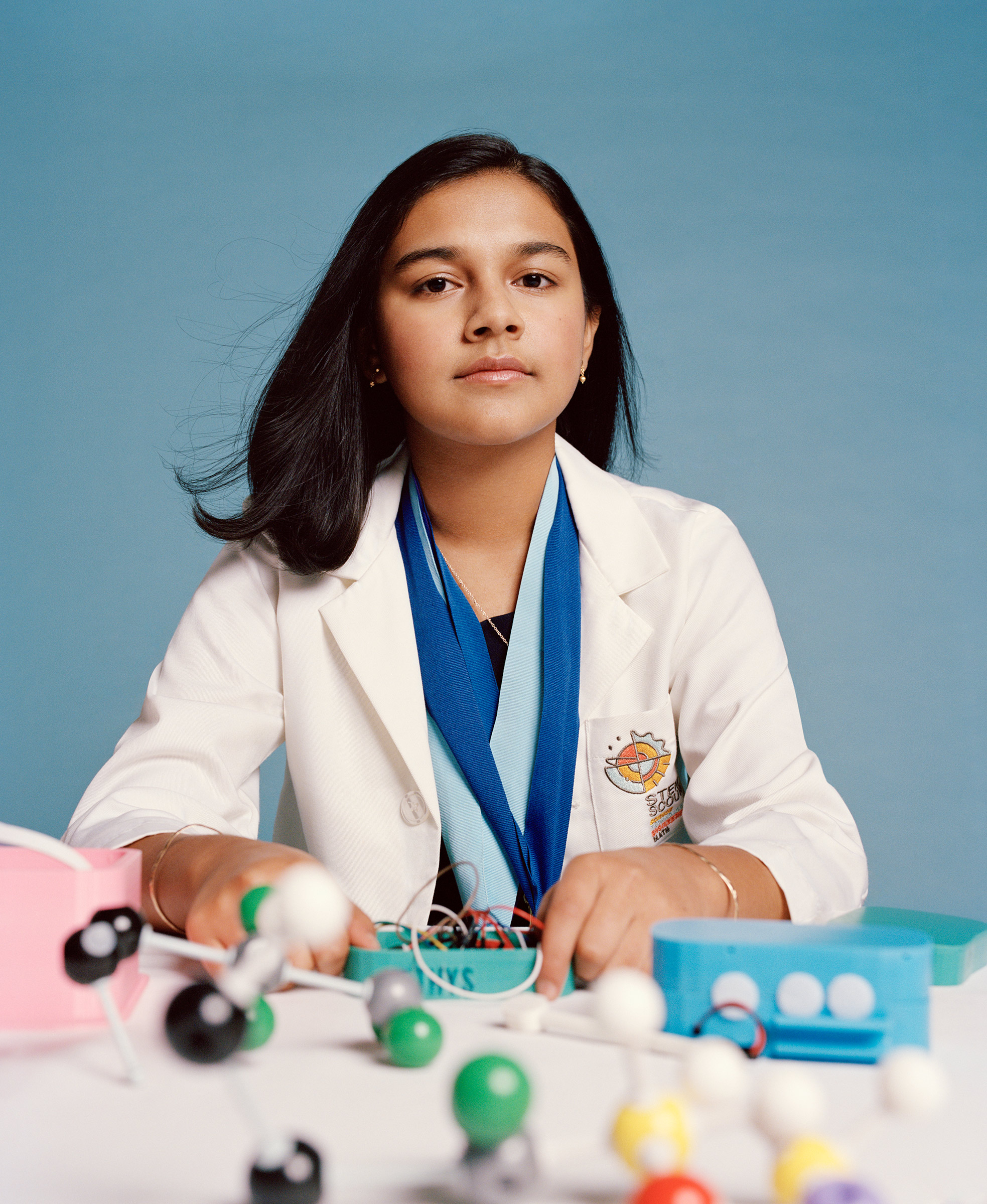
GR: I just looked at what worked for me and decided to share it with everyone else. So I made this process that I use for everything now: it’s observe, brainstorm, research, build, communicate. It started with a simple presentation and lesson plans, and then I started adding labs and contests that students could do. Now I’ve partnered with rural schools, girls in STEM organizations, museums all across the world, and bigger organizations like Shanghai International Youth Science and Technology group and the Royal Academy of Engineering in London to run innovation workshops.
The students that I work with, they just don’t know where to start. I think that if you give them that spark that they can then build off of, then that changes everything. That means one more person in this world wants to come up with ideas to solve problems.
At the end of every workshop, everyone has something that they can start working on. If you can do this in 45 minutes to an hour, imagine what you can do if you spend months and months working on it. I’m so excited when I get an email like, “Hey, I attended your workshop four months ago and here’s my finished product, I really love it, it’s a shoe that calls 911.”
AJ: That is insanely impressive. For so many young people, it takes a lot to find the confidence to be able to put an idea forward. You have a brilliant mind, clearly, but you are very, very generous with that mind, and that’s just really wonderful. What are you working on now?
GR: I’m currently working on an easy way to help detect bio-contaminants in water—things like parasites. I’m hoping for this to be something that’s inexpensive and accurate so that people in third-world countries can identify what’s in their water.
And I recently hit my goal of 30,000 students who I have mentored, which is superexciting. It’s like creating a community of innovators. I really hope the work that all of these kids are doing identifies innovation as a necessity and not something that’s a choice anymore. I hope I can be a small part of that.
AJ: I think you are. Your generation is unique. You don’t just accept what’s being put forward, but really question it, and that’s so important. I know there are many, many issues we’re facing today. With your work on water contamination, is the environment something that’s very much on your radar?
GR: Yeah. Our generation is facing so many problems that we’ve never seen before. But then at the same time we’re facing old problems that still exist. Like, we’re sitting here in the middle of a new global pandemic, and we’re also like still facing human-rights issues. There are problems that we did not create but that we now have to solve, like climate change and cyberbullying with the introduction of technology.
I think more than anything right now, we just need to find that one thing we’re passionate about and solve it. Even if it’s something as small as, I want to find an easy way to pick up litter. Everything makes a difference. Don’t feel pressured to come up with something big.
Most of my work with the bio-contaminants is based on a gene-based therapy solution which I’m still trying to figure out. I’m also working on a product that helps to diagnose prescription-opioid addiction at an early stage based on protein production of the mu opioid receptor gene. I’ve been really, really interested in genetics. That’s what I like, so that’s what I’m deciding to work on.
AJ: You know, one of the things you pointed out which is so important is that there is so much, you can get overwhelmed. When I started working in refugee camps, there are so many different issues to deal with within a displaced situation. You get overwhelmed, and you don’t really move. I love what you’re saying: find what you’re passionate about, and don’t try to solve everything. Every solution is a part of the bigger picture of what we have to do. I really hear that and appreciate you saying that.
Where do you get your news or do your research?
GR: My pop-culture news is actually MIT Tech Review. I read it constantly. I think that’s really where inspiration strikes: hearing about all these amazing people at schools like MIT and Harvard who are doing such amazing work with technology. And I try to connect it back to what I see out there and put it together in a way that no one’s seen before.
AJ: When you’re not doing all of these amazing things—because I feel like I’m speaking to a 60-year-old scientist in Geneva—what do you do that’s just a 15-year-old thing?
GR: Actually I spend more time doing 15-year-old things during quarantine. I bake an ungodly amount. It’s not good, but it’s baking. And, like, it’s science too.
AJ: So the science of the kitchen is not your specialty?
GR: I guess not, no. To be fair, most of the time we don’t have eggs at home, or like flour, so I have to like go online and search eggless, flourless, sugarless cookies, and then I try to make that. I made bread recently and it was good, so I’m proud of myself.
AJ: Well, I’m just so happy to get to know you a little bit. I’m sure I’ll be using your inventions in years to come and just being in awe of you as I watch you do more and more in your life, and I can say, “I met her once.”
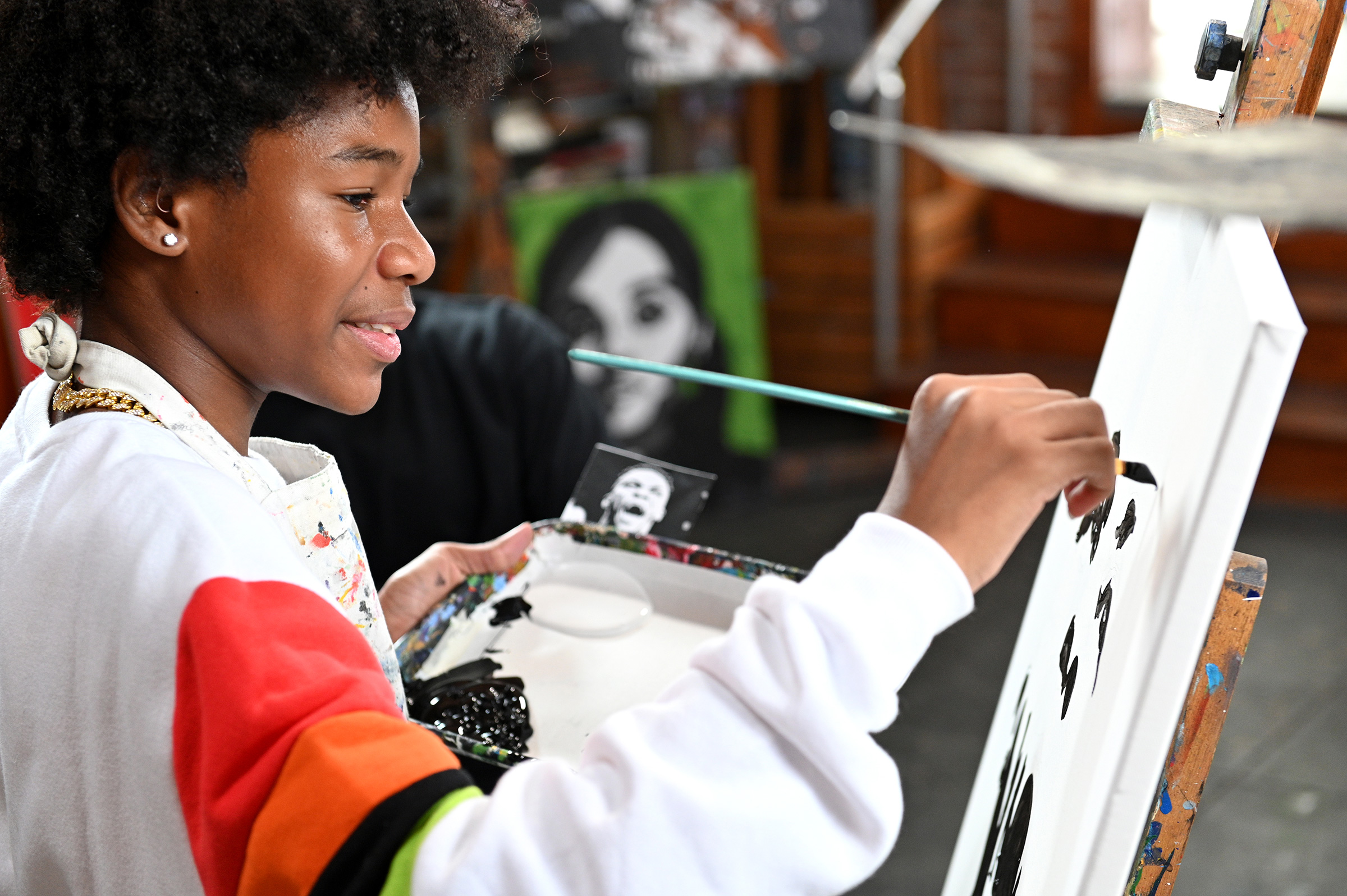
Tyler Gordon, 14
San Jose, Calif.
High school freshman Tyler Gordon has faced more challenges than some people experience in a lifetime. He used a wheelchair for nearly two years after breaking bones in his legs and hips because of a vitamin D deficiency. He was born deaf and underwent a surgery at age 5 that gave him some hearing, but he still speaks with a stutter. In elementary school, he got bullied so much that he barely spoke.
“His escape was to not speak at all; he’d nod his head or point, he was so afraid,” says Gordon’s mother Nicole Kindle.
But at 10, Gordon found his artistic voice. After watching his mom paint, he decided to try it himself and won first place in a school art contest with a portrait he’d made of the principal. In the four years since, he’s painted more than 500 portraits of Black icons who inspire him, most recently Vice President–elect Kamala Harris, who called him right before Thanksgiving to tell him he’s “amazing” and has a “gift.”
“Sometimes I can’t talk and get words out, so I speak through my art,” Gordon says. Painting helps him move past the bullying, which he still experiences; he lost a front tooth in one incident earlier this year. “It helps me take my mind somewhere else. I don’t want to keep thinking about that same moment for the rest of my life.”
His big break came in 2018, when his portrait of NBA star Kevin Durant went viral and caught the eye of the player’s mother, who bought it for $300. Celebrities started calling for commissions. Among the stars he’s painted and met are Janet Jackson, Kevin Hart, Jennifer Lopez and Alex Rodriguez. In 2019, a portrait of the Central Park Five fetched more than $100,000 at auction, and he won a 2020 Global Child Prodigy Award. This past summer, in the wake of George Floyd’s death, Gordon used his canvas to raise awareness about victims of police brutality, feeling a particular affinity to 23-year-old Elijah McClain, who also had special needs and an artistic side.
Media interviews and speaking engagements have helped Gordon combat his fear of public speaking, and he hosts virtual painting classes every Wednesday on Instagram, where he boasts nearly 50,000 followers.
“Since he started painting, I can’t get the kid to be quiet,” says Kindle. “He’s not afraid of the stutter anymore.” Now, by starting his own online platform for video tutorials called Tongue Tye’d, he hopes he can show other kids how to overcome their challenges with art as well. —Olivia B. Waxman

Jordan Reeves, 14
Columbia, Mo.
For Jordan Reeves, having a limb difference has helped her envision a more accessible world. The 14-year-old designer and activist was born with a left arm that stopped growing beneath her elbow, a physical difference that helped ignite her passion for design. In the past four years, Reeves has created a 3-D-printable prosthesis for kids that shoots out biodegradable sparkles, consulted for companies like Mattel to create toys that affirm limb difference and even co-written a memoir about what she’s learned from growing up with a disability.
Reeves sees good design as an avenue to empower those with disabilities, which is why she and her mother co-founded Born Just Right, a nonprofit that celebrates kids with physical differences and gives them design and STEM resources so they can come up with their own solutions.
“A lot of kids with disabilities have a different point of view on the world, because the world isn’t made for us really,” she says. “We have this great design mindset because we grow up problem-solving. It’s a pretty cool thing.” But one of the biggest barriers she sees kids facing is finding the confidence to innovate. “It’s so important to believe in yourself,” she says. She found her confidence with the help of her mother, and by seeing the positive results of some of her early work. “[When I started,] I was just 10 and I was able to make an impact, which is so cool,” she says. “Go for it, don’t doubt yourself, don’t think about what other people think—you can make change no matter how big or how small.”
Although 2020 has brought new challenges, it hasn’t slowed Reeves down. She’s been hosting digital-design workshops for Born Just Right, appeared at the United State of Women conference to advocate for gender equity, and was the youngest of 30 global leaders recognized this summer at a 30th-anniversary commemoration of the signing of the Americans with Disabilities Act. She also co-founded the Steam Squad, an online organization that gets kids involved in science, technology, engineering, math and the arts. Up next: working with Microsoft to design a guitar that anyone with mobility challenges can play.
She’s inspired, she says, by the tenacity of her generation. “It’s so sick knowing that I’m a part of a group of people who are working toward the future,” Reeves says. “The world needs a lot of work at times, and it’s important to be there to do as much as you can.” —Cady Lang
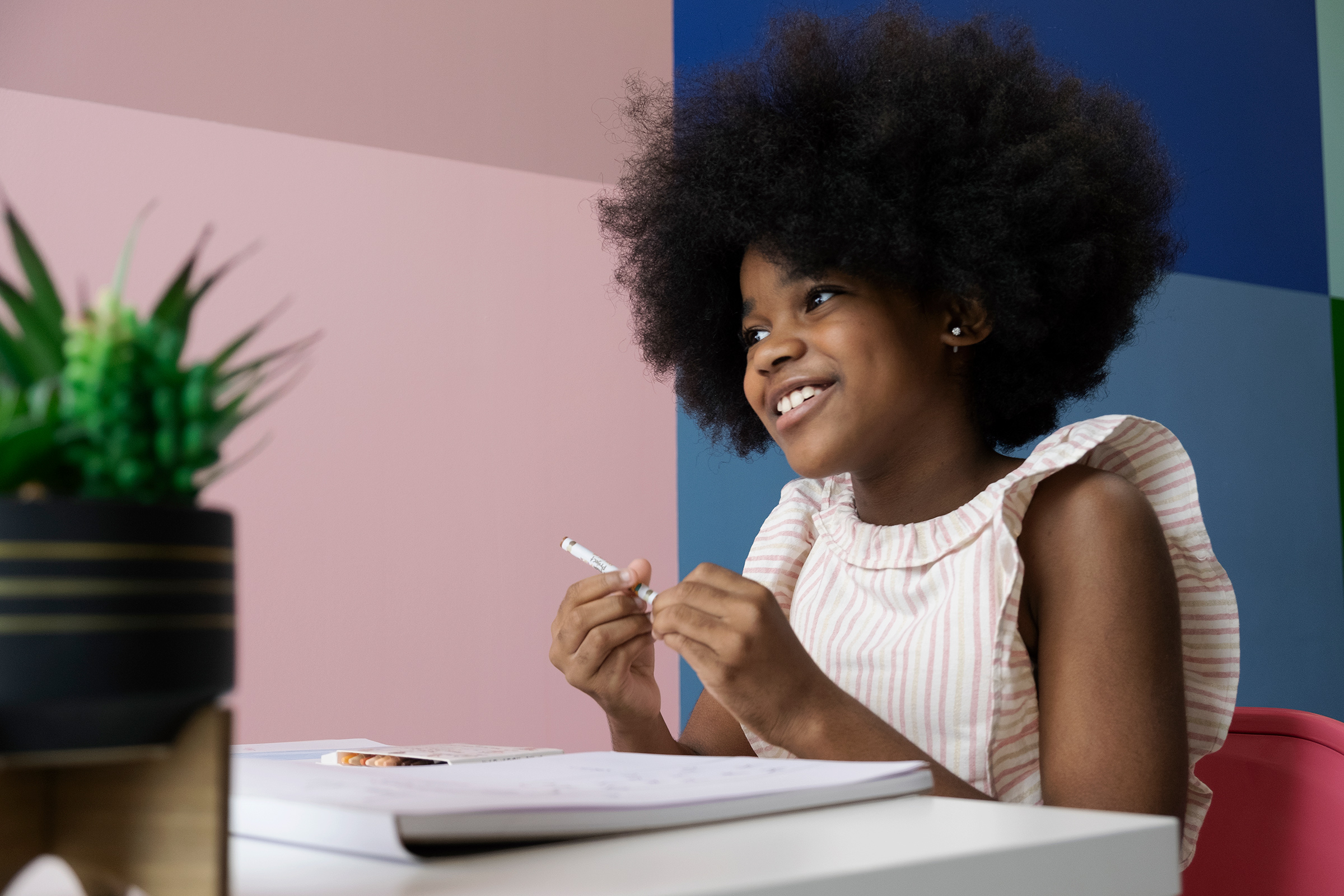
Bellen Woodard, 10
Leesburg, Va.
Bellen Woodard is only 10 years old, but she’s on a mission for inclusion. She has created her own line of crayons in tones that reflect the wide spectrum of skin colors she sees in the world, claiming the title of world’s first crayon activist.
The idea came when one of Woodard’s classmates asked her for a “skin color” crayon. Woodard, who was the only Black student in her grade, says she knew the classmate meant the peach-color crayon. When she told her mother Tosha Woodard about what had happened, Tosha suggested that she pass her classmate a brown crayon instead next time. “But I didn’t want to do that,” Woodard says. “I told her next time I was actually going to ask what color they want because it could be lots of different colors.” Then she got to work making a set of 12 “skin color” crayons.
Although research shows that children can begin to understand and believe racial stereotypes by age 4, an August study by researchers at Skidmore College and Boston University found that parents often delay conversations about race with children because they under-estimate children’s ability to understand the concept. Tosha says her daughter’s crayons have proved a great age-appropriate tool to spread a message of inclusion.
In spring 2019, Woodard launched More Than Peach, a nonprofit that has donated more than $40,000 worth of multicultural crayons and sketchbooks to schoolchildren across the country. Her packet of crayons has been added to the permanent collection at the Virginia Museum of History & Culture.
Woodard says she was surprised by how quickly her message spread. She started by simply talking to her teacher about the crayons, then they were picked up by the rest of her school, and now she gets calls to speak—and distribute her crayons—at schools across the country. In March, she received a special recognition from the Virginia state legislature for her work.
Woodard’s crayons are named for things found in nature—there’s “Sahara” and “Reef,” “Koko” and “Serengeti”—but each is also clearly labeled “skin color.”
“I wanted to have crayons for a purpose,” she says. “The peach crayon is a skin color … but is it the only one? No, it isn’t. My different shades of peaches and browns can hopefully match everyone including me and my friends and my classmates. Just everyone.” —Jasmine Aguilera
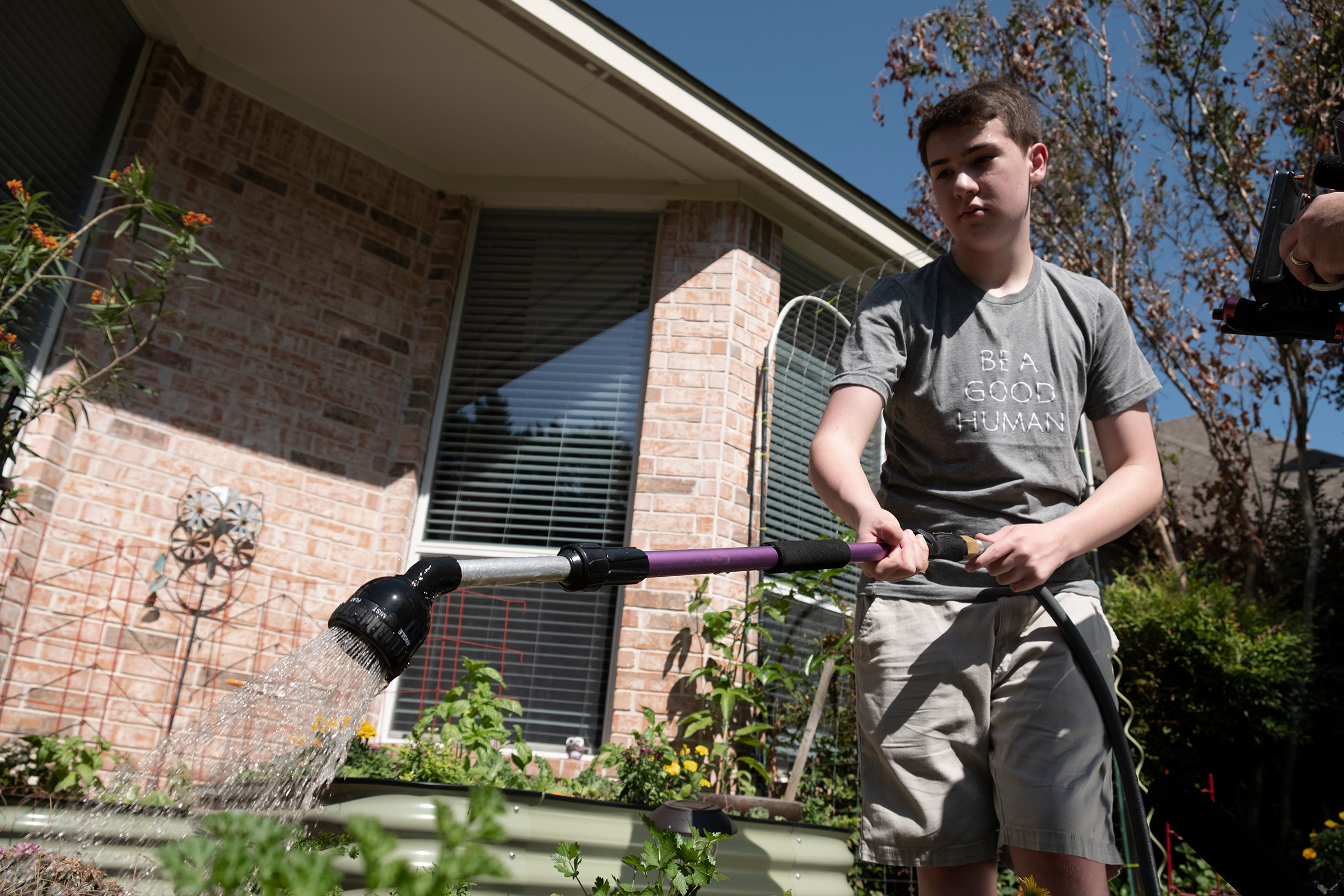
Ian McKenna, 16
Austin, Texas
Ian McKenna was in third grade when he learned that nearly a quarter of the kids at his Austin school weren’t getting enough to eat at home. He wanted to help, but local volunteer organizations turned him away, saying he was too young. So he decided to find his own solution. For years, he had been gardening with his mother, and they often distributed their extra vegetables to the neighbors. Why not give the produce to a soup kitchen? “Then I thought, I’m good at gardening,” says McKenna, now 16. “Maybe I could try to start a garden that’s meant solely to help feed these people who are in need.” Better yet, he thought, why not plant a garden at school, so that kids in need could take food home?
McKenna persuaded his school to set aside space for a garden, then he asked the community for donations of seeds and equipment. Other students donated their time. Within months, McKenna’s garden was producing lettuces, spinach, tomatoes, cucumbers and squash for students and their families. Now, seven years later, McKenna’s Giving Garden project has expanded to five area schools in addition to his own backyard garden, and he has provided more than 20,000 lb. of organic produce (enough for 25,000 meals) to Austin families and food pantries.
For most of his gardening activities, McKenna wears the same T-shirt in different colors, emblazoned with what has become a personal motto: BE A GOOD HUMAN. To him, that means helping in any way you can, no matter your age. Even a smile can make a difference in someone’s life, he says. “It lets them know that they are important. It can change their day.”
When COVID-19 hit the U.S., McKenna redoubled his efforts, cooking up to 100 meals out of his home to distribute to the hungry on the weekends, so that he could give them one less thing to worry about. When social distancing meant that volunteers couldn’t work on community garden plots, he started offering online tutorials and a gardening hotline so families could grow at home. Once he realized that some people didn’t know how to prepare the more unusual vegetables in his gardens, like the 100-lb. bullet head wax melons he distributes by the slice, he started offering virtual cooking classes (the melons cook, and taste, like zucchini). While gardening is his core focus, McKenna says he is always looking for new ways to help the hungry. “Hunger doesn’t stop,” he says. “So I won’t stop until it does.” —Aryn Baker
More Must-Reads from TIME
- Donald Trump Is TIME's 2024 Person of the Year
- TIME’s Top 10 Photos of 2024
- Why Gen Z Is Drinking Less
- The Best Movies About Cooking
- Why Is Anxiety Worse at Night?
- A Head-to-Toe Guide to Treating Dry Skin
- Why Street Cats Are Taking Over Urban Neighborhoods
- Column: Jimmy Carter’s Global Legacy Was Moral Clarity
Contact us at letters@time.com